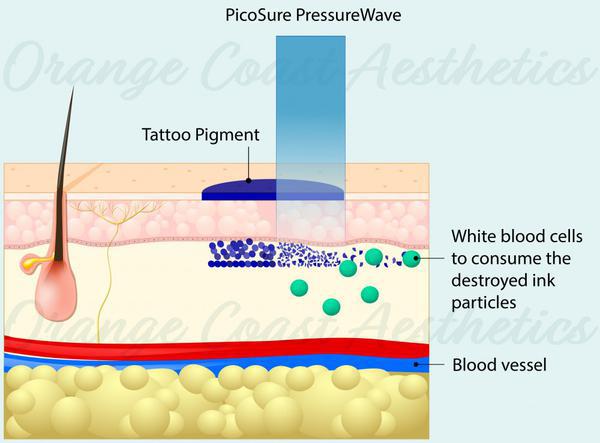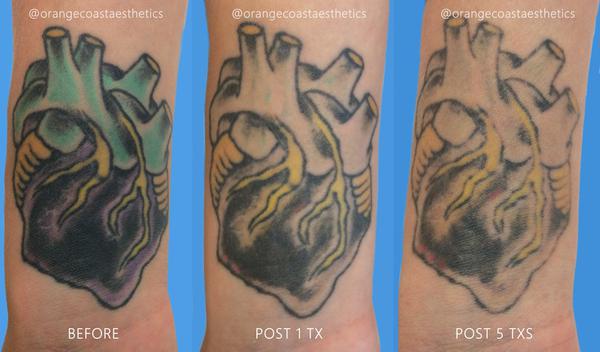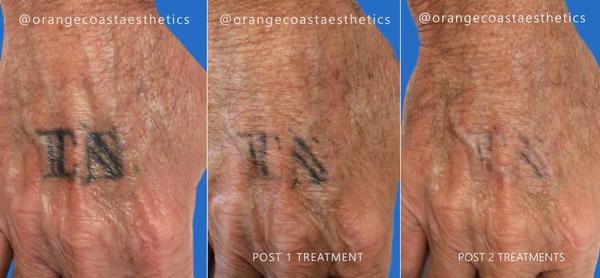Laser tattoo removal is expensive, uncomfortable, and time consuming. However it is the best alternative.
Traditionally tattoos have been treated with Q-switched nanosecond lasers. Q-switched lasers heat tattoo pigment particles within billionths of a second. PicoSure lasers are faster in that it delivers high energies trillionths of a second.
PicoSure lasers are more effective for tattoo removal compared to Q-switched lasers. They are non-selective in pigment targeting and highly effective for faded tattoos. Q-switched lasers work best for green and blue ink while the Nd:YAG lasers are best for red and black ink.
The traditional lasers and PicoSure laser have the same epidermal whitening (frosting) after treatment. It’s important to know the white frosting is a temporary side effect from the heating of skin pigment where carbon dioxide is released from laser penetration. Numerous sessions will be needed and the tattoo ink may not be completely cleared.
Laser tattoo removal results will depend on the type of tattoo, amateur or professional, color of the tattoo, patient skin type, and the age of the tattoo. It’s important to notice existing scars as most patients are unaware they have a scar on the treatment site. This is why treatment photos are imperative as documentation.
Professional tattoos are the most difficult to treat as tattoo ink is deeply placed and requires a minimum of 8-15 treatments or more to improve. Amateur tattoos like “stick and poke” improve rapidly and need far less treatments for clearance.
Generally the more colors in a tattoo the more sessions it will require and stubborn it will be. Black and dark blue tattoos respond well to laser. Greens, light blues, and reds also respond well. Purple, yellow, and orange are challenging ink colors.
Other factors that influence pigment clearance include smoking, placement of the tattoo and the size. Smoking leads to poorer results with laser tattoo removal. Tattoos located on the feet and legs are also more stubborn.
Common side effects of laser tattoo removal include: redness, swelling, blistering, hyper and hypopigmentation.
It is important to go to an experienced clinician as every patient’s skin type and tattoo is unique.


Have a tattoo you want to lighten or remove?
For more information or an individual consult please contact our office at 949-704-5071.


